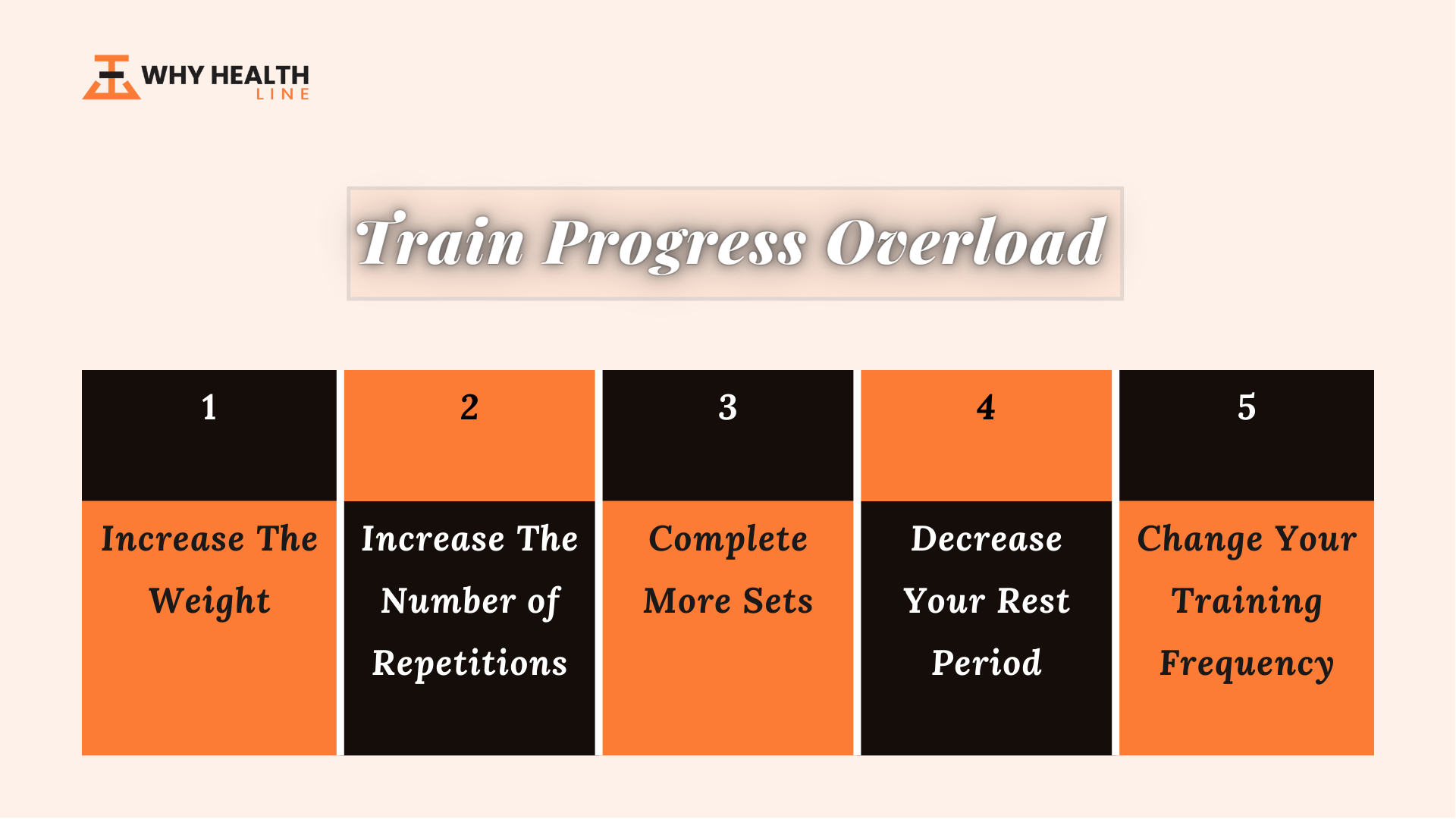
Introduction
Progressive overload training is a type of strength training that makes workouts more challenging. This method involves a gradual increase in the weight, frequency, and number of repetitions in the regular strength training routine.
The gradual increase in the intensity of the workout enhances the stress over the musculoskeletal and nervous systems and enables your body to continuously make gains in muscle size, endurance, and overall strength.
One can prevent a plateau by changing the workout intensity and adding additional muscle tension. When our body adapts to the type of specific exercises, we cannot expect any further gains.
With progressive overload, one can feel significant improvements in musculoskeletal strength.
However, in progressive overload training, it is essential to follow a certain plan. Proper planning can prevent a person from increasing the intensity of the workouts too quickly, and it also drives progress by ensuring that a person knows about the results of his workout with each passing day.
Designing proper workout plans also enables the body to adapt slowly to intensity shifts while minimizing the risks of injuries.
Fundamental Principles of Progressive Overload Training
In order to get the most out of progressive training, one needs to apply the following key principles of training.
-
Specificity
This principle depends on the type of training a person does. It should be specific to the needs and the chosen sport of that person. One should train the energy system and the fitness and skill components according to their sport.
People should also test various components to evaluate their weaknesses and strengths, such as speed, imbalances, power, posture, etc.
-
Reversibility
One can lose what they have gained if it is not maintained. If someone stops training after making significant muscle gains, these improvements will be reversed in no time.
So if you have not trained for some time or reduced the amount you are training, you may not be able to resume training to the same level as before, so it is crucial to building the body back progressively until you reach that level again.
-
Variance
Variance in your training can keep you interested and gives your body a different challenge. The variance can either be by switching the movements to circuits in the usual training or doing something entirely different.
Experts say that training programs limit periods of complete inactivity, and prolonged periods of inactivity should be avoided.
Your training program should incorporate some kind of “maintenance” exercises where an extended break is required.
How Do You Train Progressive Overload?
There are various ways to change the intensity of weight-training workouts. Some progressive overload techniques include the following:
-
Increase The Weight
In progressive overload training, the simplest way is to lift comparatively heavier weights than the previous week. People should also make sure they can lift the new heavier weight at the same number of repetitions as before with proper lifting form.
For example, if someone was able to do a 100-pound squat for one week, in the next training session, he might do 105 pounds while maintaining the same posture and form.
-
Increase The Number of Repetitions
One can gain more muscle size by increasing the number of reps. However, you cannot add reps without evaluating your muscle strength because an indefinite number of reps can fatigue your muscles.
-
Complete More Sets
After increasing the number of reps, one can also increase the number of sets in order to boost training volume. Individuals can aim for 5 to 7 sets per lift. One can also increase the intensity of lifting weights to continually challenge their muscles.
-
Decrease Your Rest Period
Fewer rest periods between sets can help your body increase metabolic efficiency. Instead of taking a 5-minute rest between sets, try resting for only 2 to 3 minutes. This will also help you work through the exercise faster.
-
Change Your Training Frequency
If you want to focus on a specific muscle group, you can change the frequency of training by adding more resistance exercises that can target that muscle group.
For instance, if you want to build stronger biceps or triceps, add an extra upper-body workout to the weekly exercise plan.
Remember that progressive overload is a gradual process, so be patient and persistent in your training, and always focus on proper form and technique to avoid injury.
Safety Tips:
People can minimize the risk of injuries while training by following some simple safety tips, including:
- Warm up properly before each workout.
- Use a proper form and technique when lifting weights.
- Avoid increasing the intensity by more than 10% each week.
- Try to focus on quality over quantity.
- Keep yourself hydrated.
- Remember to calm down your nerves after the workout.
- Include enough rest days in your fitness routine.
- Try to work with a certified personal trainer, as it can help ensure that a person uses proper technique and form while performing progressive overload exercises.
- A personal trainer can also create specific workout plans that gradually increase in intensity, allowing the person to progress safely.
Progressive overload is a principle in strength training that involves gradually increasing the demands placed on the body during exercise to continually challenge and stimulate muscle growth and strength gains over time.
FAQs
What Is An Example of Progressive Overload Training?
Progressive overload is a principle used in exercise and fitness training where the body is gradually exposed to increased demand over time, leading to adaptations that improve physical fitness and performance.
Essentially, it means challenging your body with slightly more weight, reps, or intensity than it is used to, in order to stimulate growth and improvement.
Here’s an example of progressive overload in weight training:
Let’s say you’ve been doing squats with a 100-pound barbell for 3 sets of 10 reps, twice a week for a few weeks, and you’re starting to feel like it’s becoming easier.
To apply progressive overload, you can increase the weight by 5-10 pounds or more, depending on your current level of fitness and goals.
How Many Reps Do You Require In Progressive Overload Training?
The number of reps for progressive overload can vary depending on the individual’s fitness goals, training, experience, and the specific exercise being performed.
In general, the most effective way to achieve progressive overload is to gradually increase the weight lifted over time, while keeping the rep range within a moderate to high range.
- For strength training, a common approach is to perform sets of 1-5 reps with heavy weights, aiming to increase the weight lifted over time. This can help to build maximal strength and power.
- For muscular endurance training, higher reps of 15-20 or more per set are often used, with a focus on maintaining good form and technique. This can help to improve endurance and muscular conditioning.
It’s important to note that the specific rep range used for progressive overload may need to be adjusted based on an individual’s goals, training, experience, and any specific limitations or injuries they may have.
Consulting with a qualified fitness professional can be helpful in developing a safe and effective progressive overload program.
